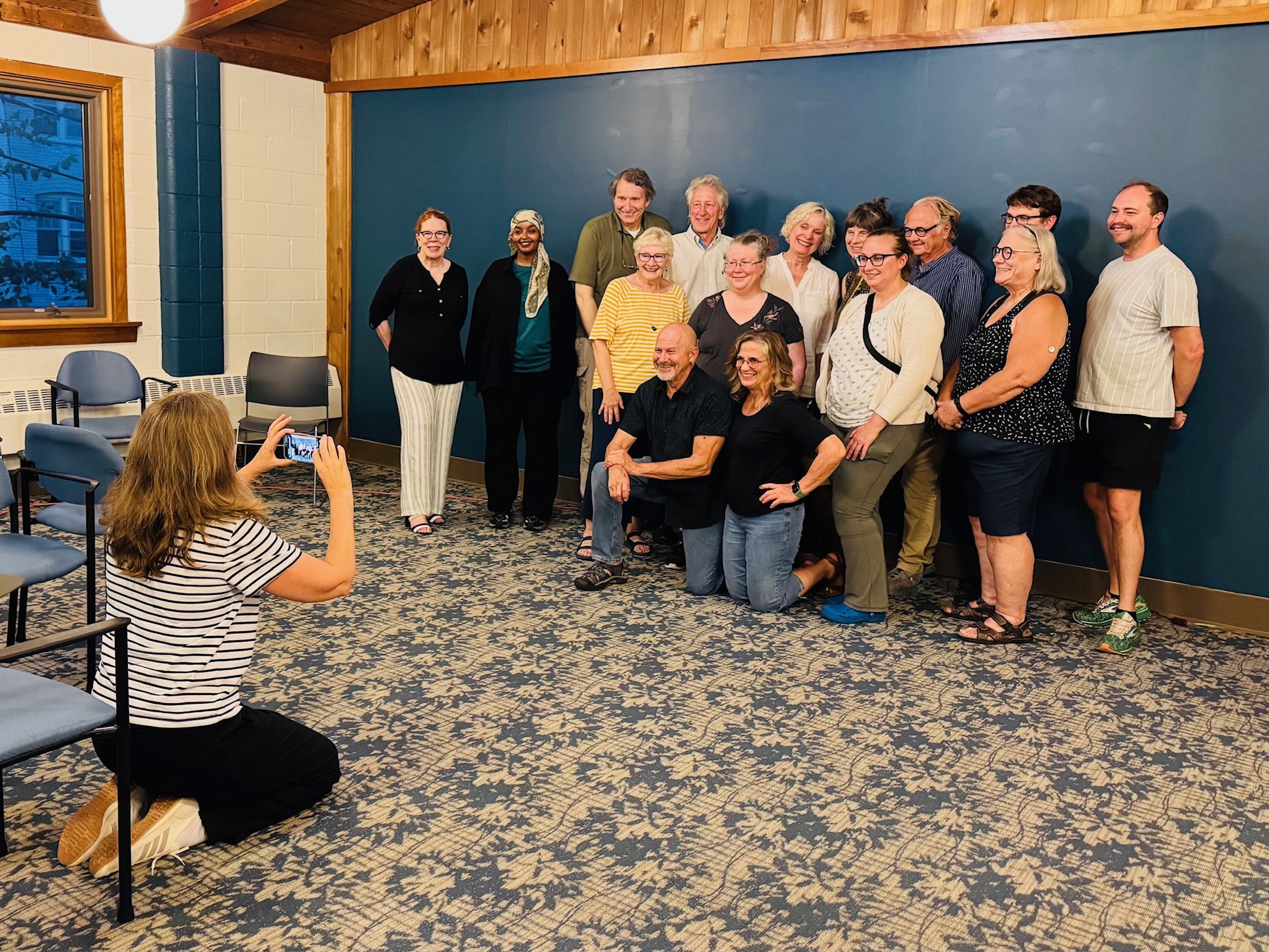Before there's a play, there's a backstage story
Public Relations Maven Jennifer Weismann takes a photo of the cast and designers on the play’s first meeting.
By Nancy Monroe
It may take a village to raise a child, but it takes a creative community to raise a curtain. Before a play makes it to the stage, a theater company has completed both a a sprint and a marathon.
There’s the stack of scripts to go through akin to kissing frogs to find the prince. Not that the plays aren’t worthy, they just don't always meet PRIME’s mission of including at least two strong roles for women over 50.
Once the play is secured and the fees paid, the next steps are to hire a director and the creative team and to start auditioning actors. For Peter Pan on her 70th Birthday by Sarah Ruhl, two-time Ivey Award winner, Mariam Monasch, was selected to direct based on her 45 years of excellence. She is in the driver’s seat during the auditions with both artistic directors, Alison Edwards and Shelli Place, to discern who has the chops for her vision of the play.
The auditions are somewhat curated. Many of the people who tried out for the parts were already known to the Artistic Directors from their performances in other plays, in addition to several open casting calls attended by multiple theaters' Artistic Directors at the same time. And actors thought to be right for the roles are extended an invitation.
Auditions for PP70th Birthday were held in a church basement with a waiting room and a performance space behind closed doors. Once invited into the inner sanctum, the actors turn in a resume with a headshot attached and perform a short soliloquy of their choice. If they pass this test, they are given a few pages of script for the character they are trying out for and return to the waiting room to pace and read.
Two actors not auditioning, one female, one male, read the other parts in a scene to give the actor someone to react to. All this time, the director is taking notes. The next step is call-backs when the actors return to read for a specific role.
All the designers meet with the director individually to ensure they are following her vision when they start to craft their own vision.
Once the play is cast, the first rehearsal is a table reading and a casual, get-to-know each other with the cast, director and creative team. Everyone from the lighting director to the costume and scenic designers give a short presentation on what they are thinking of creating.
Sadie Ward, who was charged with creating a hospital room, the family’s dining room and a childhood nursery, says her living room is taken over during preplay process with the furniture she’s either rented or found on Amazon Marketplace.The size and shape of the stage also plays a part in how the set is designed. “At the core, we’re all storytellers,” she says, “we all have (our) parts of the story to tell.”
Costume Designer Barb Portinga looks for clothes that reflect the time frame for the play, in this case the 1990s. She needed both hospital clothes as the siblings sit with their dying father and then later costumes for Peter Pan, Captain Hook and the Lost Boys. Where does she start? “I go to the thrift store and see what’s there,” she says.
As the rehearsals progress other crew members are called into action, including a stunt/fight coordinator, a sound director, CaptionPoint operators and public relations. And in this case a dog handler for Ozzy, who was a good boy in the role of Nana.
Like making sausage, the audience sees only the finished product, none of the curtains being sewn, the lines being flubbed or the sword flight gone awry. Just the magic, and the talent in the spotlight.

